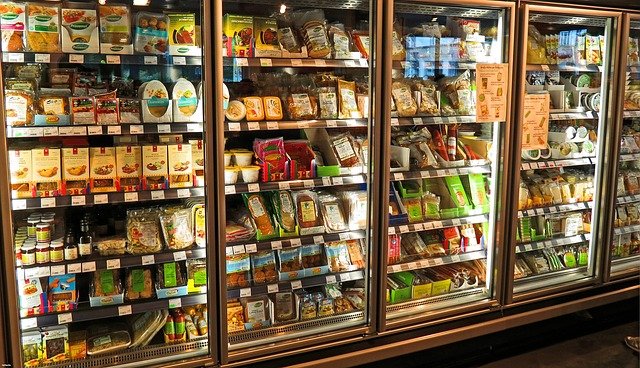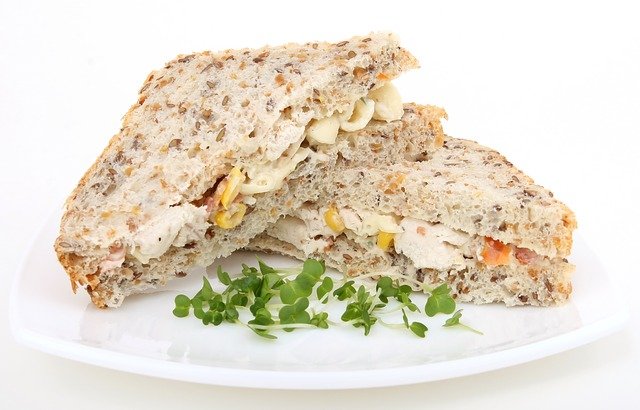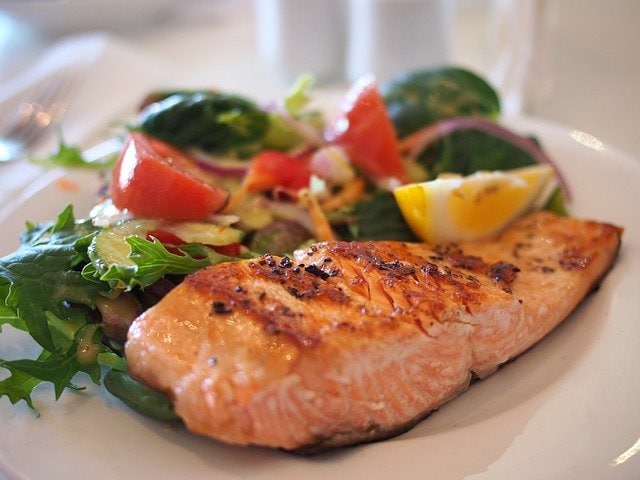Eating healthy has never been easier than now, as more and more Aussies having access to a wide range of foods. But this easy access also means that customers also have access to a higher amount of junk food and unhealthy diet options. When it comes to eating healthy, the personal choices you make will help you steer clear of highly processed and unhealthy foods and all the health conditions that come with it.

It is not easy to choose nutritious and wholesome foods and beverages when foods laden with unhealthy fats are so easily available and also so tempting. It is even harder when we live in a society that makes overconsumption and instant gratification the norm. While the occasional cake or bag of chips will not ruin your health in the short run, you should be following a healthy diet to ensure overall wellbeing and stay free of disease.
What does healthy eating mean?
Clean eating is the practice of consuming healthy foods in their unprocessed and natural state as far as possible. A healthy diet consists of vegetables, healthy fats, fruit and lean sources of protein. This diet excludes all forms of processed foods which are notoriously high in sugar, additives and salt.

Eating healthy is simple as long as you follow these basic principles:
- Consume homemade food as much as possible. Even healthy takeaway options may not be as healthy as you think.
- Keep alcohol consumption to a minimum.
- Make plant-based foods the staple of your diet.
- Focus on consuming seasonal and local produce.
- Make water your primary drink of choice for hydration.
- Avoid deep fried food and replace with grilled, stir fried or steamed dishes. Have you tried the new air fryers? They are incredible!
- Substitute complex carbohydrates for simple processed ones.
- When it comes to shopping, buy organic food as much as possible.
- Pick lean sources of protein instead of fatty cuts.
It is not only what you eat that is important but how you eat as well. Your eating habits may be sabotaging your diet, even if you eat healthy.
Stick to eating only when hungry and avoid absent-minded snacking throughout the day. Three main meals and two healthy snacks will be sufficient to meet your nutritional requirements.
If you are fond of coffee, tea or caffeinated or sugary beverages, you should look at those habits too. Aerated drinks are one of the most harmful items in any diet and you should avoid stocking any at home. Switch to homemade fruit juice, infused water, or green tea. Iced coffee or hot coffee at home is a better option that buying it at your local café.
How do I get started with eating healthy?
It is important to start small and remain realistic when it comes to switching to a healthy diet. If you go from five sugar-laden coffees a day to only drinking plain water, you are setting yourself up to fail. Your body and mind work best on gradual change and will learn to accept new changes as a habit when you introduce them gently.
If you have identified several habits that you would like to change, start with just one. Once you get used to a new healthy habit, your body will respond and you’ll be more likely to crave healthier options.
Plan simple substitutes for all the junk food that you consume. Switch from a candy bar to an apple after lunch. Switch from a bag of chips to a plate of veggie sticks and dip during movie time.
For more information on starting to eat healthy, check out our blog about Healthy Eating for Beginners.
How do I incorporate the five food groups into a healthy diet?
Planning a healthy diet is easier if you include foods from all five groups into your meals every day. Each food group provides you with essential nutrients that keep you healthy. The amount you need depends on several factors, including your level of activity and your current lifestyle.
The five food groups are:
Vegetables and legumes (beans and peas)

This food group provides hundreds of nutrients such as fibre, vitamins and mineral. The recommendations for this food group are:
- Purchase and eat only those items that are in season
- Ensure you eat a rainbow i.e. eat different colored vegetables and legumes
- Eat anywhere between 2-6 servings of veggies a day. One serving is half a cup of cooked veggies or a one cup of raw veggies
Fruits

Fruits are an excellent source of fibre, vitamins and minerals while providing good carbohydrates. The recommendations for this food group are:
- It is always best to eat fruits that are in season
- Avoid eating cooked fruit: raw fruit provides the highest nutritional benefits
- Avoid frozen or canned varieties and stick to fresh fruit
- Aim for anywhere between half a fruit to three pieces a day
- Consider eating a whole fruit rather than fruit juice. Fruit juices lack fibre and tend to be high in sugar. If you must have juice, choose freshly squeezed juice instead of pre-packaged options.
Grains and cereal foods

Grains and cereal foods refers to whole grain foods and not the highly processed breakfast cereal with colourful packaging that you see at the supermarket. Wholegrain foods provide you with generous amounts of protein, minerals, fibre and vitamins. Most of these nutrients are lost in the processed versions. Examples of whole grain foods include:
- Brown rice
- Wholegrain breads
- Buckwheat
- Rolled oats
- Cereals like muesli
When it comes to grain and cereal foods, it is recommended that you consume anywhere between 4-8 servings a day. A single serving equates to one slice of bread, half a cup of cooked rice or about 30 grams of wholegrain breakfast cereal.
Lean sources of protein

High quality sources of protein based foods provide you with plenty of protein, vitamins and minerals. Animal protein tends to be particularly high in vitamins and minerals, but plant based sources of protein provide all of the above in addition to dietary fibre.
Good sources of lean protein are:
- Lean cuts of meat
- Fish
- Tofu
- Poultry
- Eggs
- Legumes and other beans
- Nuts and seeds
When it comes to lean sources of protein, consider consuming anywhere between 1-3 servings per day. One serving consists of one of the following:
- Two eggs
- About 200 grams of tofu
- 100 grams of fish
- 65 grams of red meat
- 30 grams of nuts and seeds
- 80 grams of poultry
Dairy products

Dairy is a good source of vitamins, minerals (particularly calcium) and proteins. If you are vegan or prefer to not consume dairy for other reasons, consider soy based drinks that are fortified with calcium. Other plant based milks such as nut milk and oat milk have calcium added to them but lack vitamin B12 and protein, which could lead to deficiencies.
Good sources of dairy products are:
- Milk
- Kefir
- Yogurt
- Cheese
When it comes to dairy products you should consume about 1-4 servings a day. Here one serving corresponds to a cup of milk, two slices of cheese or about 200 grams of yogurt.
Drinks
The best choice for a beverage is water. Stick to water as much as you can, and try to drink the recommended daily two litres. For those who find it hard, consider investing in a large sipper with a straw or an infuser bottle to make it easier. If you are bored of water, consider:
- Freshly squeezed fruit juices
- Coconut water
- Green tea or herbal tea
- Coffee
- Sports drinks
- Vitamin water
Discretionary choices
Discretionary choices means the type of foods that do not belong in the five food groups. These are ‘extras’, which means your body doesn’t need them for healthy functioning. However these are the foods that most people crave most often. Most of these items are processed foods or beverages and include.
- Fried foods
- Chocolates and candy
- Cakes, baked snacks
- Processed meats
- Alcohol
- Fast food
- Savoury snack items
- High sugar energy drinks
- Sodas and soft drinks
- Ice cream
These food choices are laden with saturated fat, sugar and salt. While they do provide a lot of energy, this energy is in the form of empty calories. This is why they are known as ‘energy-rich but nutrient-poor’ foods.
Sugar is one of the least healthy ingredients in your diet, but unfortunately it is a big component for many people. Not sure how to quit sugar? Read our blog post How to Quit Sugar.

Make sure to choose healthy food items instead of such choices if you wish to eat clean and healthy. Studies have shown that about 40% of children’s caloric requirements in Australia is met by discretionary foods, which is very damaging for their long-term and short-term health.
Eating healthy on a budget
With the rising price of food, it is not always easy to eat healthy while keeping costs low. It can also be tempting to avoid the cooking, prep and planning that goes into sticking to a healthy diet.
However there are some habits that you can start to work on that will make this easier:
- Make a shopping list before you go to the market and stick to it, avoiding tempting and unhealthy food
- Browse the internet for healthy recipes that do not require too many ingredients. Follow bloggers or influencers who talk about healthy eating to help you stick to your plan.
- When you cook a meal, make extra so that you have enough to make another meal or snack.
- It is always best to buy fruits and vegetables in season. You will find that they are cheaper and fresher.
- Experiment with freezing your own fruit if you know your family may want fruit that is out of season.
- Vegetarian meals tend to be cheaper and can be made as nutritious as meat. Consider switching to more veggie meals every week.
- When buying items that keep for long (rice, beans, oats and pasta), choose bulk quantities so that you can pass the savings on to fresher or more exciting ingredients.
- Buy the basics first (dairy, grains, vegetables and meats) before considering snacks.
- Never go shopping on an empty stomach. You are more likely to buy more and to be tempted by unhealthy food options.
How does cooking help with eating healthy?
When you want to switch to eating healthy, cooking your own meals gives you more control. You know exactly what is going into them and can modify the ingredients so that you can still eat your favourite foods while still eating clean. You can use healthier cooking methods that allow you to eat heavier foods without compromising on your heath. This also lets you retain more nutrients from your food because the food is freshly prepared.

Some healthy cooking methods to consider are steaming, grilling, boiling, baking, or microwaving your food. Eating fruit and veggies raw whenever possible is a great way of getting your nutrients and fibre.
You might want to consider some of these handy tips:
- Using non-stick cookware allows you to avoid excess oil and butter
- Avoid adding salt to food while it is cooking. You will use less if you add salt after cooking.
- Try using lemon, garlic, herbs, or sauces like miso or soy to add flavour instead of relying on salt or fat.
- If you have a favourite recipe that you know is unhealthy, experiment by eliminating excess fat and sugar from it.
- For any recipe, throw in some extra beans or veggies will ramp up the nutritional quotient.
- Remove the skin from meat and trim the excess fat before cooking.
- Try to eat more fish or white meat than red meat.
Eating healthy should feel like a good thing, not like you are depriving yourself of something you love. Turn every cooked meal into an occasion by setting the table, eating on good crockery, and enjoying the company of loved ones.
It is also important that the food looks and smells good. Adding fresh herbs, tasty condiments, and appealing salads to your meals will make them fun to eat. Also do make sure you whip up an occasional indulgent treat so that you learn how to avoid guilt or negative feelings with your new healthy lifestyle.
Guidelines for eating healthy
The deluge of information available when trying to follow a healthy diet can be daunting and confusing. Consider these guidelines to make it easier to eat clean and healthy:
- When planning a nonvegetarian meal, choose fish. Two servings of fatty fish (like salmon or mackerel) is recommended every week. These tend to be particularly high in omega-3 fatty acids which is excellent for warding off brain and heart health concerns.
- Steer clear of sugary drinks and all forms of soda. In addition to increased risk of Type 2 diabetes and obesity, these sugar bombs cause substantial liver damage, early ageing and higher levels of anxiety. Consider water or unsweetened beverages instead.
- Opt for smaller plates to trick your brain and body into feeling fully quicker and avoid overeating. Larger plates tend to make your brain believe that the body hasn’t gotten enough food. If that doesn’t work, consider changing the colour of your plate as higher colour contrast between plate and food has shown to increase satiety and reduce consumption. Swap that white plate for a yellow one when eating pasta in white cream sauce.
- Whenever possible choose whole foods instead of the processed options. Skip instant packaged foods and look for whole foods such as vegetables, fruits and whole grains. Processed foods tend to be high in empty calories, which means they are loaded with energy but deficient in nutrients. Whole foods on the other hand are brimming with nutrients while keeping the calorie count low.
- When shopping for food, try the ‘outer ring’ technique. Purchase only those items that are available on the outside ring of the store. Most supermarkets keep processed foods in the middle, enticing shoppers to spend more time in the store. Healthier food are usually stocked on the outer shelves. However, retail theory is changing everyday, so do check labels when in doubt.
- If you are confused about snacking options, nuts and seeds are your best choices. Loaded with protein, vitamins, minerals and healthy fats, they are filling and are considered nutrient powerhouses. Munch on them raw or roasted or add them to other snacks to increase their nutrient quotient.
- While they do not provide much in the way of calories, probiotic foods such as kefir and kombucha are brimming with nutrients and healthy gut bacteria. Regular consumption of probiotics such as yogurt is known to improve digestion and assimilation of nutrients and boosts the immune system.
- When baking food, make sure to swap all-purpose flour (which is highly processed) with whole grain flour which is more nutritious.
One of the most important tips when looking to eat healthy is to focus on nutrients rather than calories. At the end of the day, it is not the calories that matter as much as how much nourishment your body is getting.
Naturally if you are overweight or obese or if you have pre-existing health conditions, the rules for healthy eating are different. In that case you might like to try online nutrition coaching to get an eating plan that is tailored to meet your body’s requirements.
Eating healthy for life
To conclude, eating healthy should be treated as a lifestyle change and not as a one-off diet plan. If you want to move towards a healthier diet, try sticking to some basic rules.

Eat regularly and don’t skip meals
Eating healthy is not a fad diet that requires you to starve yourself. You should get enough of the right food to manage your health and nutritional requirements, support your lifestyle, and maintain an appropriate weight. It is essential that you eat regular meals in moderate proportions and with a diverse range of ingredients. Starving yourself or limiting your intake of food will only make you feel deprived and unhappy, and could cause deficiencies of minerals or vitamins.
This is especially true of breakfast. When you start the day hungry, you are far more likely to give in to junk food in the late morning, or to eat larger quantities at your next meal. Those who eat a healthy breakfast on a consistent basis are more likely to manage their weight and health more successfully. If you’re not a breakfast-eater, check out our blog on the importance of breakfast and find out how you can start making it a habit.
Plan for a diverse range of food
Eating healthy is not a limited diet plan. The only foods that are restricted are junk food or over processed foods. Apart from these items, you are free to choose from a world of nuts, veggies, fruits, meat or fish, eggs, and dairy.
While it may seem like your diet is becoming restrictive, a short period of research and planning can open your world up to a range of delicious and healthy ingredients. When you were allowing yourself to eat discretionary foods, you probably didn’t spend much time on new or healthier options.
Look for interesting ways to get the recommended quantity of servings from the five food groups mentioned above, and you’ll find yourself with an exciting new menu for your daily meals.
Pay attention to your plate
If you eat or snack while you watch television or while you are working at your desk, you are more likely to eat junk food or to eat larger quantities than you actually want. When you eat mindfully, you will make better choices and will eat only as much as you need.
If you are unsure about making the right diet plan for yourself, you might like to consult a nutritionist for a plan that includes the foods you like. Avaana can help you find a nutritionist online.



